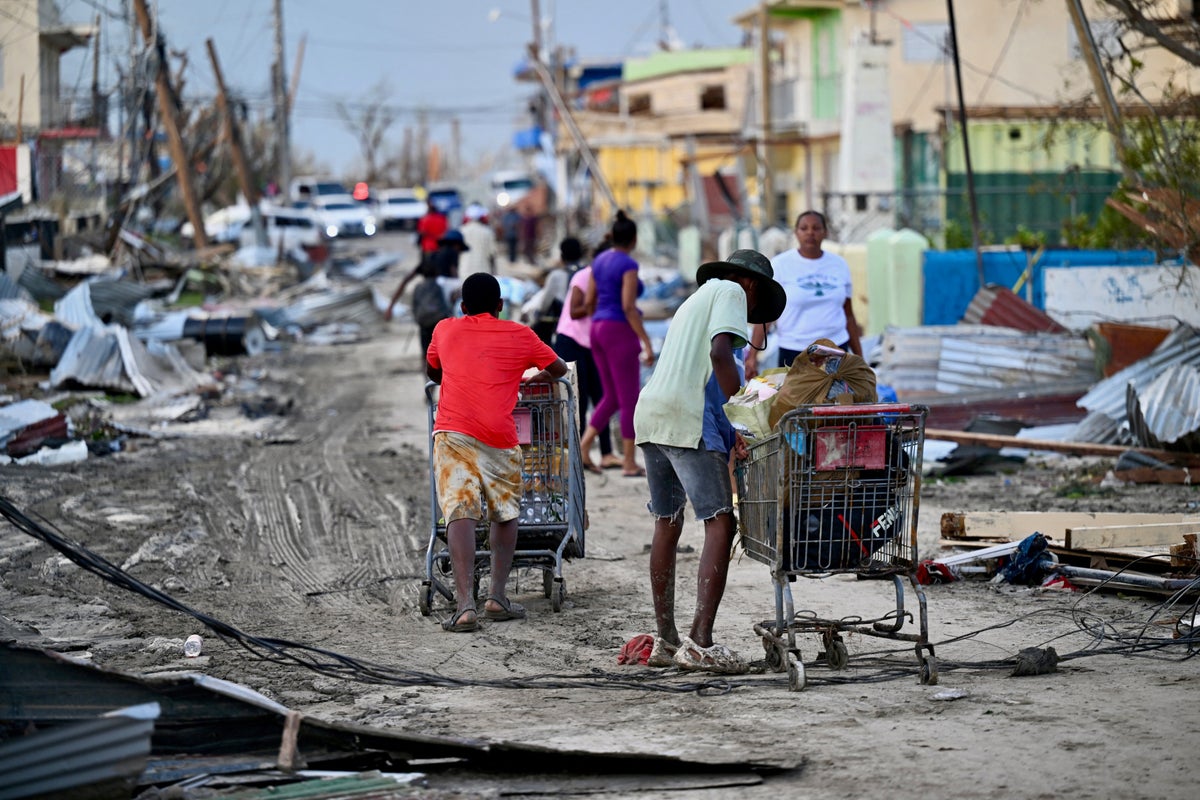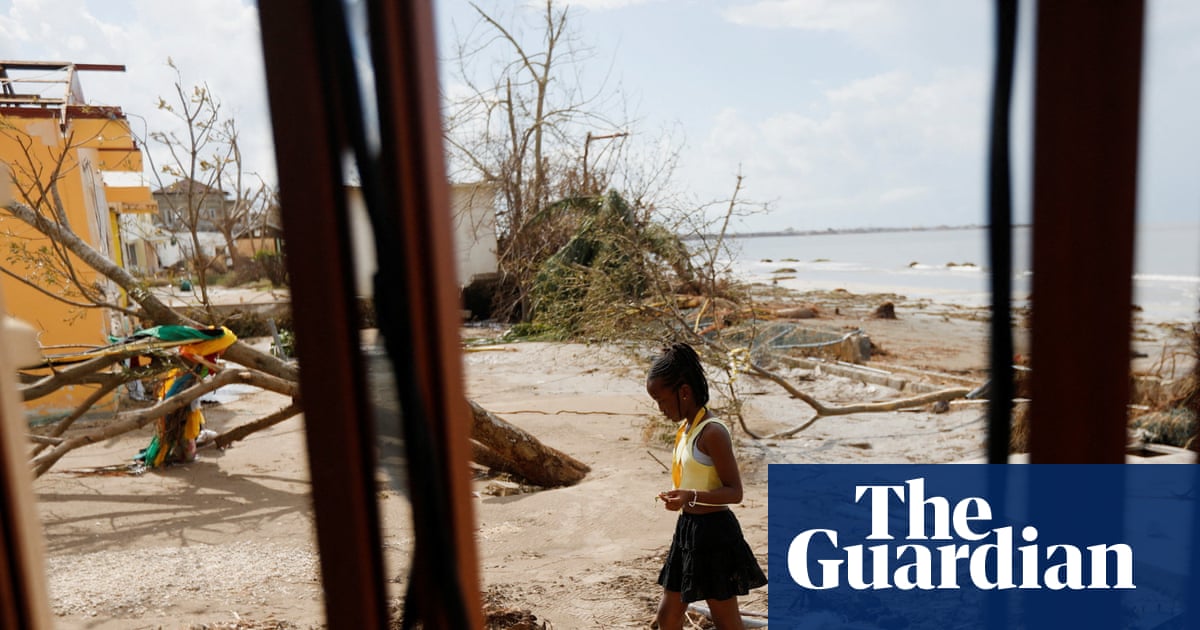Hurricane Melissa has slammed into Cuba, after sweeping through Jamaica as a catastrophic category 5 storm, the strongest to hit the island since record-keeping began in 1851.
The huge, slow-moving storm lashed Jamaica with intense winds and heavy rain that caused extensive damage. It will linger over Cuba as a category 3 hurricane, which could still unleash extensive destruction, and is forecast to move into the Bahamas.
Satellite footage shows the moment the eyewall of the storm hits Jamaica.
Satellite footage
This satellite footage shows the hurricane passing over Jamaica.
Satellite video shows the storm passing over Jamaica.
How intense is the storm?
Melissa is particularly dangerous as it intensified extremely quickly and is moving at the sluggish speed of a person running, meaning it hovered over Jamaica for longer, compounding the damage.
The storm’s winds escalated from 70mph to 140mph (225km/h) in just a day, one of the fastest intensifications on record in the Atlantic Ocean.
The US air force flies through Hurricane MelissaFlying above the thick clouds of Hurricane Melissa
Category 5 is the highest on the Saffir-Simpson scale, with sustained winds exceeding 157mph. This system was worse still when it hit Jamaica, with maximum sustained winds of 180mph (280kmh). It moved north north-east at 7mph, according to the US National Hurricane Center in Miami.
Probability of hurricane-force winds
How prepared was Jamaica for a storm like this?
Forecasters had accurately predicted that Jamaica faced catastrophic flash flooding and landslides. Airports were shut and motorway toll barriers were lifted to allow everyone who needed to evacuate to move as easily and as fast as possible.
The small country has limited resources and was still repairing damage caused by Hurricane Beryl, which brought historic levels of destruction last year.
“There is no infrastructure in the region that can withstand a category 5,” the prime minister, Andrew Holness, said. “The question now is the speed of recovery. That’s the challenge.”
One of the biggest challenges with hurricanes is storm surges, where sea levels can rise several metres higher than usual along the coast as the low-pressure system moves over.
How storm surges workHow storm surges work
The aftermath could have significant impact – Jamaica depends on tourism for about a third of its annual revenue.
How are people sheltering?
In Cuba, about 735,000 people were evacuated from their homes, authorities said, while in Jamaica, 850 shelters were opened.
A man watches the coastline in Kingston as Hurricane Melissa closes in. Photograph: Matias Delacroix/AP
But Colin Bogle, a Mercy Corps adviser based near Kingston, said most families had decided to shelter in their homes, despite the government ordering evacuations in flood-prone communities.
“Many have never experienced anything like this before, and the uncertainty is frightening,” he said. “There is profound fear of losing homes and livelihoods, of injury and of displacement.”
Satellite images of Hurricane Melissa over the Caribbean SeaSatellite images of Hurricane Melissa over the Caribbean Sea
What is the impact of the storm so far?
Heavy flooding was reported in south-west Jamaica with severe damage to buildings. The parish of St Elizabeth was under water, an official said, with more than 500,000 residents without power. Prime minister Holness has declared the island a “disaster area”.
The Jamaica Gleaner newspaper shared footage of what it said was a roof torn from the Savanna La Mar hospital in Westmoreland parish, close to where Melissa’s eyewall made landfall.
A petrol station damaged by the Hurricane Melissa in Montego Bay, Jamaica. Photograph: Xinhua/Shutterstock
What is the impact of the climate crisis?
The extraordinary intensification of Hurricane Melissa is likely to be a symptom of the rapid heating of the world’s oceans.
Melissa is the fourth storm in the Atlantic this year to undergo rapid intensification of its wind speed and power. This sort of intensification has been linked to the human-created climate crisis, which is causing oceans to become hotter.
Researchers at Climate Central, a nonprofit organisation that analyses climate science, found that during Melissa’s rapid intensification the storm drifted over exceptionally warm ocean waters that were 1.4C hotter than average. These conditions were made up to 700 times more likely by the climate crisis, the organisation said.
How warm seas contribute to hurricane frequency and strengthHow warm seas contribute to hurricane frequency and strength
Last year, the world’s oceans were the warmest on record, continuing a recent trend of record-breaking marine heat.





